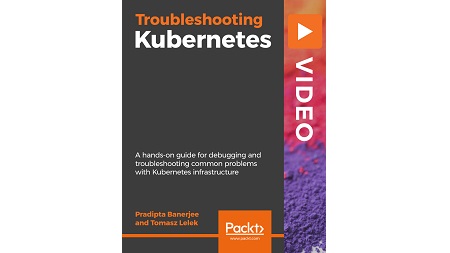
English | MP4 | AVC 1920×1080 | AAC 48KHz 2ch | 2h 55m | 629 MB
Practical solutions to common issues faced while deploying, managing, and operating your Kubernetes clusters
Containers are changing the way applications are developed, deployed, and managed. Consequently, container orchestration has become a critical piece of infrastructure for enterprises on their digital transformation journey. Kubernetes is an open-source container orchestration platform for automating the deployment, scaling, and management of containerized applications. It has become the de-facto standard for container orchestration.
This course provides a tour of how to debug issues with the Kubernetes cluster infrastructure and presents a working conceptual model of how clusters operate. You will be addressing common problems faced by developers in cluster management, monitoring, and logging. Subsequently, we examine common issues when creating and deploying apps on Kubernetes.
By the end of the course, you’ll have gained full control of your Kubernetes infrastructure and will be able to manage it with ease.
Please note a working knowledge of Kubernetes is required for this course.
Learn
- Plan, operate and manage a Kubernetes cluster in production
- Troubleshoot cluster issues
- Select the correct resources in Kubernetes to serve your infrastructure goals
- Manage application deployments on Kubernetes clusters
- Configure cluster-wide logging
- Monitor and set up alerts for cluster health and determine if any action is required
- Best practices for working with Kubernetes
Table of Contents
Avoiding Installation Pitfalls
1 The Course Overview
2 Planning and Installing
3 Resource Management
4 Scenario – Insufficient Cluster Capacity
5 Pod Security Policy
6 Troubleshooting Networking Issues
7 Scenario – Deploy the Debug Tool
8 DNS or Pod-to-Service Communication Issues
9 Scenario – Kubernetes Dashboard Loading Is Slow
10 Multi-Platform Kubernetes Cluster
11 Taints and Tolerations
12 Common Issues with Multi-Platform Clusters
13 Scenario – Pending State Post-Deployment
Managing Your Cluster Effectively
14 Kubernetes Cluster Management
15 Creating and Managing Kubernetes Objects
16 Viewing Kubernetes Resources Using Kubectl CLI
17 Modifying Kubernetes Resources Using Kubectl CLI
18 Kubectl CLI Issue
19 Kubernetes Dashboard Overview
Logging into Kubernetes
20 Logging Architecture and Logging Patterns in Kubernetes
21 Cluster-Level Logging in Kubernetes
22 Common Issues Related to Logging
23 Resource Allocation and Configuration Aspects of the Logging Backend
Monitoring and Alerting
24 Kubernetes Monitoring
25 Key Resources to Monitor and Related Metrics
26 Alerts
Troubleshooting Application Deployment Issues
27 Working with Replication Controllers
28 Deployment with Replica Sets – Next – Generation Replication Controllers
29 Running Jobs – Run Once and Forget
30 Using Deployments
31 Using DaemonSet to Run Code on Multiple Nodes
32 Targeting Deployment to Specific Nodes
33 Setting Resource Limits for Application
34 Capabilities and Security Policies
35 Troubleshooting Application Deployment Issues
36 Handling Out Of Memory Errors
37 Handling Garbage Collection and Eviction Thresholds
Configuring Your Services
38 Services for Kubernetes Explained
39 Service Discovery and Routing
40 Ingress Resources Explained
41 Troubleshooting Application Access Issues
Resolve the captcha to access the links!